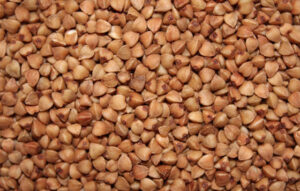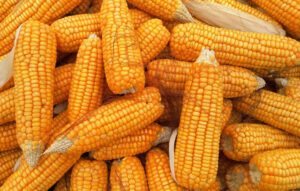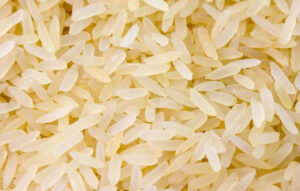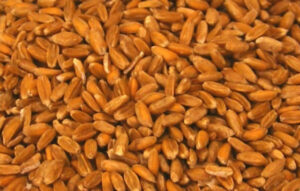GrainProTrade – Rice wholesale at producer prices
Our company GrainProTrade delivers rice directly from farmers in Ukraine and Kazakhstan on favorable terms. Our rice has a purity of 99% and a moisture content of no more than 15%.
You can safely buy rice from us without worrying about the quality, because all our products are consciously selected by our QM employees in Ukraine and Kazakhstan and thus meet the highest standards, which guarantees the expected quality of the goods. Besides the high standard, the products are sold at an affordable wholesale price. The conditions for the sale of rice can be specified at any time in writing or by telephone with the manager. Our team provides our customers with the in Big Bag packed rice ordered by truck within 5 working days.
Current prices for rice:
- rice to FCA-Price from €390/ton plus freight costs.
The main advantages of the ZusaWorking with our company:
- the high level of professionalism of our entire team, which ensures hassle-free delivery of quality rice in the shortest possible time;
- an appropriate price level, since we work directly with rice producers in Ukraine and Kazakhstan, e.gusamen work;
- convenient delivery straight to you.
Contact our managers on the website or by phone. We offer high quality rice at an optimal price!

paddy field

paddy field

Rice
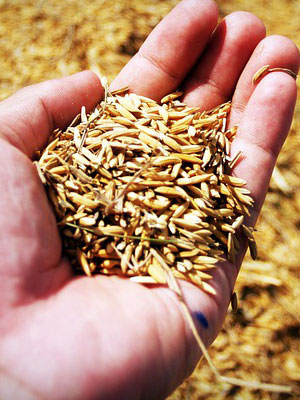
Rice

Rice
All About Rice
Rice is a cereal plant, annual and perennial, and its grains. Rice grains that have gone through a full cleaning and grinding cycle without bran are considered white. White rice is characterized by a smooth and smooth surface, mostly a glossy rich white color, and is divided in size into crew-neck, medium-black and long-grain.
Rice is one of the oldest plants eaten by man. In regions where rice is traditionally grown on plantations - in tropical and subtropical regions of Asia, Africa and America - rice is equated with bread in frequency and frequency of consumption (calorizator). White rice is the quickest to prepare but the least useful when compared to brown rices.
The calorie content of white rice is 344 kcal per 100 grams of the product (that is, dry rice). White rice contains complex carbohydrates necessary for maintaining energy balance, fiber, which normalizes the activity of the gastrointestinal tract and is a preventive agent against constipation.
The ZusaComposition of white rice includes: B vitamins (choline, B1, B2, B5, B6), E, H and PP, as well as the minerals needed by the body: potassium, calcium, magnesium, zinc, selenium, copper and manganese, iron, phosphorus and sodium. Rice removes fluid well from the human body, helps cleanse the kidneys and liver. White rice is useful for strengthening the body's defenses, as it increases immunity, has a positive effect on the work of the nervous and cardiovascular systems. Thanks to the presence of potassium, white rice significantly improves salt balance, removing excess salts and acting as a protectant against salt deposits.
The roots of the rice are wet, penetrate in depth at 20, less often at 30 cm. A distinctive feature of rice's root system is aerenchyma — a tissue containing air-conducting cavities. Since the rice roots cannot obtain oxygen from the soil under flooding conditions, the air enters the aerenchyma of the root through the stomata of the leaves and stems. As a result, not only the root, buttocks and the surrounding area of the soil are oxygenated, which significantly changes the direction of soil processes in the paddy field.
The stem is a straw with hollow internodes and executed nodes. Its length ranges from 0,5 to 2 m. Varieties of the Japanese subspecies Solomin are shorter than Indian ones. The thickness of the internodes is 6-8 mm, it decreases from the base up, while increasing the length of the internodes.
The number of nodes on the stem depends on the length of the growing season. In earlier varieties there are about 10, in late-ripening varieties up to 20.
The plate of the leaf is long and narrow (20-25 cm long, 1-2 cm wide). In the middle runs a clearly pronounced vein. The top sheet — the "flag" has a shorter and wider plate than the sheets below. The color of the leaves is green of various shades, sometimes with an admixture of anthocyanin.
Panicles are erect, pendulous and intermittent. The length of the panicle is 10-30 cm. The number of spikes is 20-250 or more, depending on the variety and the degree of development of the panicle.
The ears of corn sit on the legs. Their length is 2-15 mm. The place where the spikelet attaches to the leg is called the ear joint. From its structure depends the degree of decomposability of rice. The upper and lower spikelet scales are lanceolate or linear-lanceolate, of equal length, small, forming usually 1/3-1/2 flower scales.
Rice is a heat-loving annual crop of tropical origin. Thanks to the ability to adapt to a variety of external conditions, rice is widespread and grown in both hot and temperate belts.
The northern border of the Reisos is along the isoline of the sum of the average daily temperatures of 2000-2200 °C for the period May–September. The promotion of rice varieties to more northern areas is possible through the use of early maturing, highly productive varieties.
The optimal conditions for the water regime of rice plants are different in the growing seasons: rice germination requires a certain minimum water content of the germ tissue, which in terms of dry matter is 50-52%, and then the rice will successfully grow and develop, when the surface of the field is covered with a layer of water with the advent of shoots. This creates a kind of microclimate of the field, improves the thermal regime, promotes more active work of the root system.
Rice is a very heat-loving culture. Rice seeds germinate at a temperature of 12 to 41 °C. The seeds remain viable in a soil with a temperature of 10-12 °C for 15-20 days if they are etched beforehand. Otherwise, there is a significant death from fungal diseases (especially at low temperatures), which inevitably leads to thinning of plants and a decrease in yields.
The optimal temperature for the growth and development of rice is 25-28 °C, at 15 °C and below the growth of rice slows down, its growing season lengthens. A drop in temperature to 10-12 °C during the flowering period causes emptiness. Excess nitrogen increases the rice's sensitivity to the temperature factor. Rice loves the sun, too many cloudy days delay the development of plants, increase the number of empty and immature grains.
The yield of rice largely depends on nutrition, primarily on the safety of plants with nitrogen. A nitrogen deficiency, especially during germination and during the foliage phase, leads to a decrease in the intensity of photosynthesis, a slowdown in growth, a weakening of foliage and a decrease in spider rice elevation. Excess nitrogen leads to excessive growth of vegetative mass, a decrease in the mass of 1000 grains and greater damage to plants from fungal diseases.
They cultivate rice on automorphic, hydromorphic and halomorphic soils. With an optimal water regime, rice is characterized by increased salt resistance.
Rice contains about 13 to 15 percent water, more than 70 percent carbohydrates, 7 percent protein, 2 percent fat, as well as a variety of macro and trace elements, vitamins, organic acids and other compounds.
Rice is a national food product in Southeast Asian countries. Rice is used in the food industry, used both in its natural form and to make flour, starch, oil and other foods. Rice is used in the production of various spirits: beer, Japanese vodka «sake», rice wine.
Rice straw and bran are used as fodder for cattle. Straw is also used to make paper, various braided products, etc.


